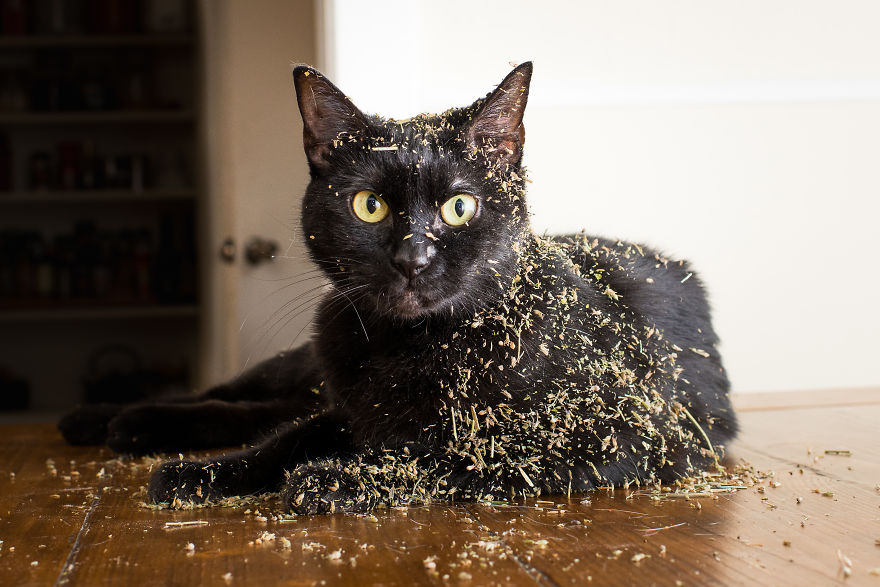"Whiskers on cats, although super-cute, have quite a number of important functions. From helping your cat judge distance to assisting your kitty with seeing things close to them, whiskers are quite remarkable.
Your cat's whiskers are an integral part of her anatomy. The purposes served by whiskers are mainly sensory, allowing your cat to get highly sensitive signals about the world around her, somewhat like an onboard radar system that's just for her.
If you've been pondering on what whiskers are for & what they do, we're ready to give you the 411 on these little projections, from how they help your kitty find her way in the dark to how they help her judge heights when jumping.
Whiskers on Cats: Why Do Cats Have Whiskers?
Of the many purposes served by your cat's whiskers, none is more important than their use as her very own sensory tool. Whiskers, scientifically known as vibrissae from the Latin word ‘vibrio,' which means ‘to vibrate,' actually do vibrate. Although not technically hairs, whiskers are made up of hair follicles that are brimming with nerves. The tip of the whisker has a proprioceptor, a sensory organ that allows them to capture vibrations & environmental changes, both of which your cat is mysteriously predisposed to interpret, much like a 6th sense that helps her navigate her world.
Why Do Cats Need Whiskers?
Simply put, navigation. Although you can't tell by looking, whiskers are embedded deeply into your cat's body, much further than regular fur, & it is there that they are connected to your cat's nervous & muscular systems. This connection allows your cat's crazy whiskers to send sensory messages to her brain in relation to her surroundings.
Let's run down 10 things you need to know about your furball's awe-inspiring built-in navigation system — her whiskers — so you'll know exactly what's going on the next time she brushes your face with these coarse appendages.
1. Your cat has whiskers in other areas of her body, not just her face. You may have noticed some stray whiskers here & there on your feline's body & thought she was just getting older. Not so. Those are also whiskers, & they can appear above your cat's eyes, jaws, ears, & forelegs, the latter of which are known as carpal whiskers. It's these carpal whiskers that help cats track their prey & part of the reason they're so good at it.
2. The distribution of muzzle whiskers is symmetrical, & there's a reason why. Cats have 24 total whiskers on their muzzles, with 12 on each side. This allows them to gain accurate measurements of the environment around them.
3. Your cat's whiskers are like an on-board measuring tape, allowing her to gauge the tightness of a space. If you've observed your cat sticking her head into a space before she comes on in, this is her way of judging whether or not she will fit.
4. Whiskers pick up vibrations. Each whisker is a vibration sensor, picking up vibrations in the air, which your cat uses when she's chasing a mouse...& measuring distances. And if you've ever felt like your cat can sense a storm rolling in before your weatherman ever mentions it, you were onto something there. Whiskers can detect air current changes, which helps them sense danger approaching.
5. Whiskers aid in vision. You likely don't know it, but your cat can't see anything close up. If an object is 30cm or closer to your cat's vision, she relies on her whiskers to tell her the location, size, & texture of the object in front of her, a useful skill that helps her navigate her world.
6. Whiskers are like night vision for cats. As you're aware, your cat can slink around in the dark without knocking over a single item. And she owes that marvelous ability to her whiskers, which sense the room's air currents based on things like furniture placement & then relay the info back to the brain so she can do her magic night walks without notice.
7. Your cat's whiskers are an emotion meter. She can't hide her true feelings if you know how to read her whisker clues. Pushed-forward whiskers show her interest & curiosity, while relaxed whiskers indicate contentment & happiness. If you see her whiskers pulled around her face or rigid, she may feel scared or threatened, or she may be stressed out.
8. Her whiskers are a defense mechanism. Your cat's whiskers also help protect sensitive areas of her body. For example, the whiskers around her eyes can alert her to close her eyes quickly before debris (even tiny dust specks) gets inside. Whiskers also detect sharp items, so your cat can steer clear & avoid injury to her face or eyes.
9. Whiskers change with age. Despite having 9 lives, your kitty can still show her age much like her human counterparts — by going grey or black.
10. Whiskers require no trimming, so keep that in mind when grooming your furry friend. Trimming your cat's whiskers is a huge faux pas that can cause her to become scared & disoriented because she loses much of their navigational power. However, if you find she has lost a whisker or 2 somehow, bear in mind that missing whiskers will grow back over time."
purina.ca
Cute Cat Pics:
Weekly Chuckle:
#StaySafe



































